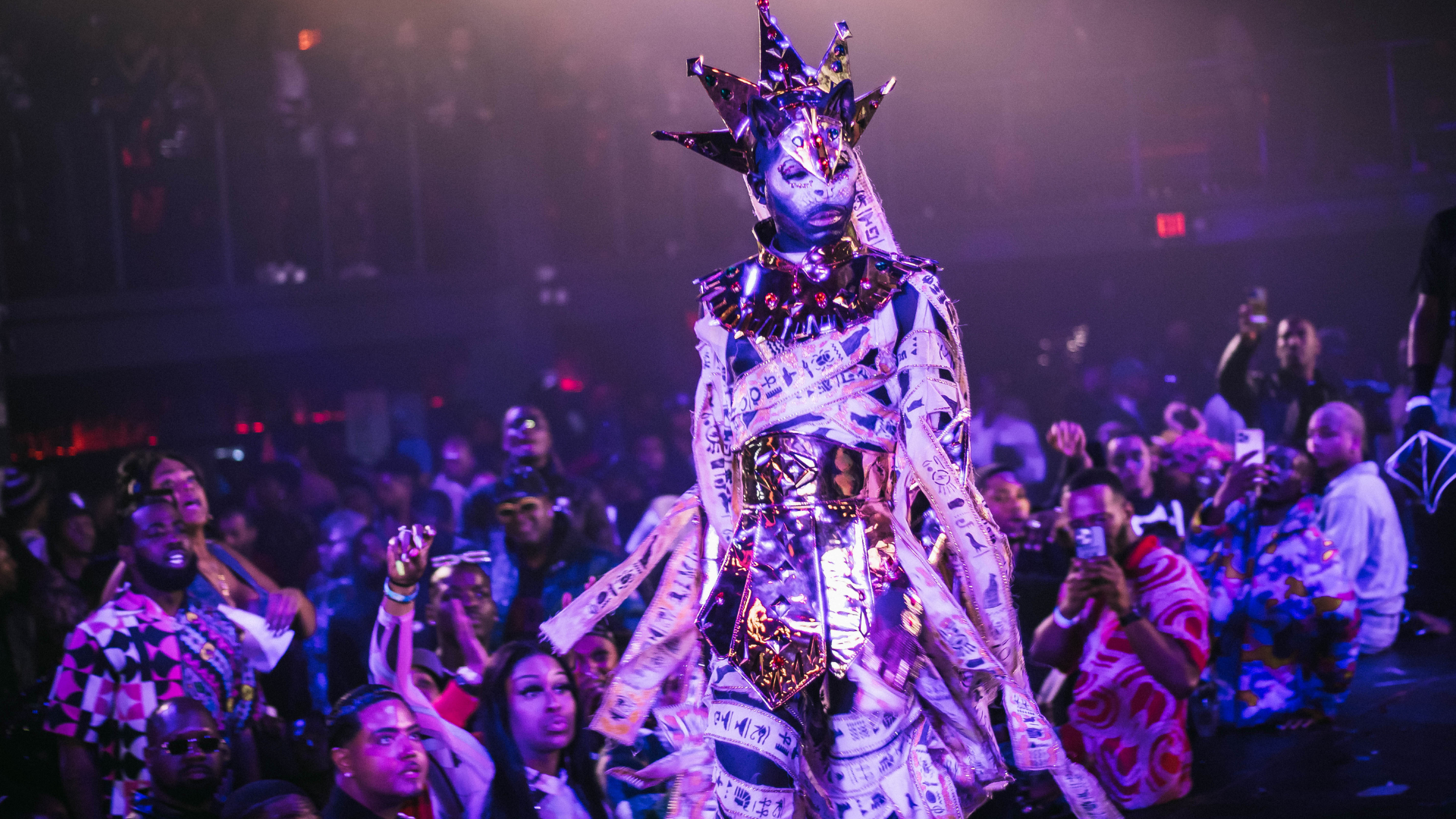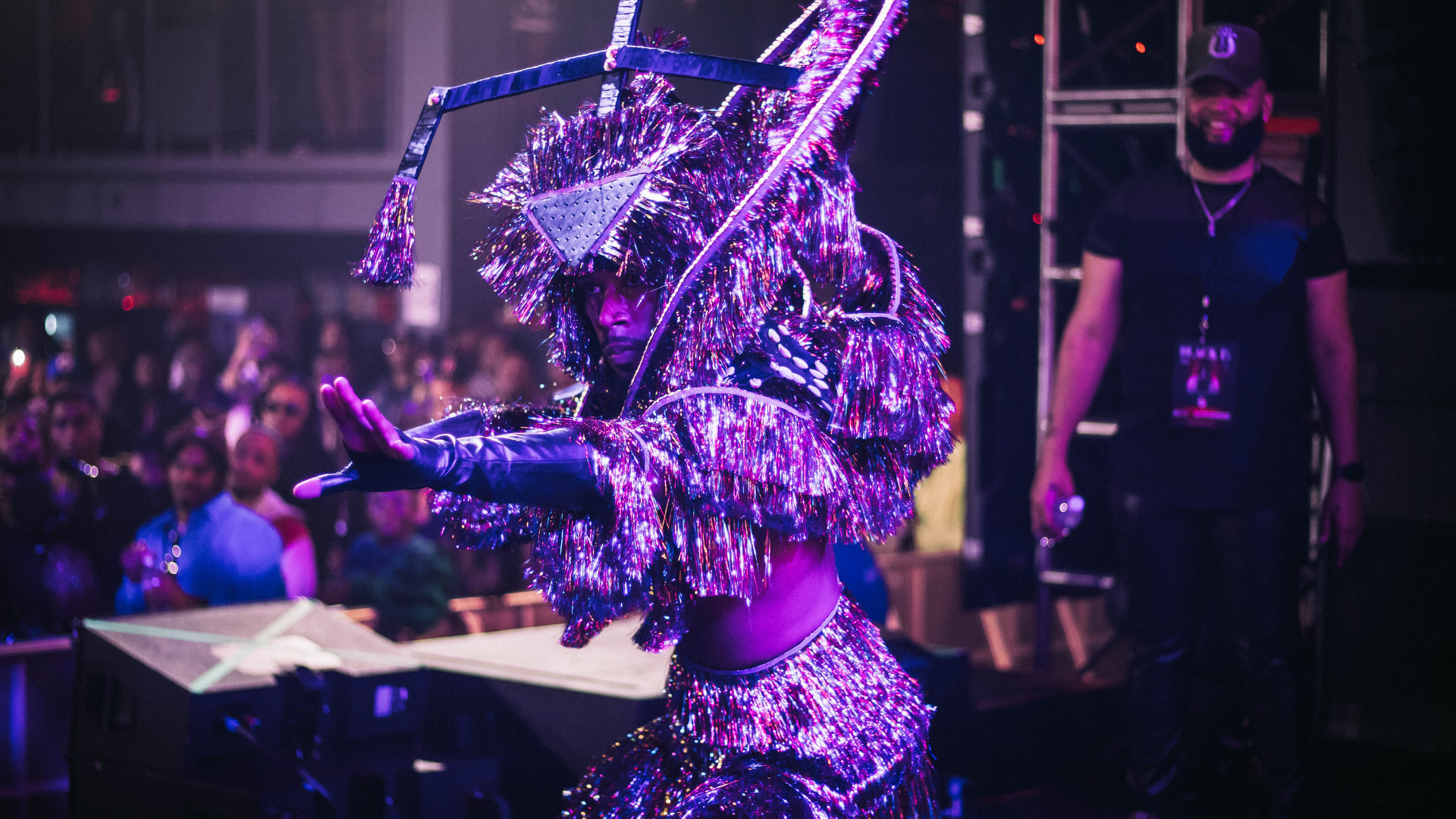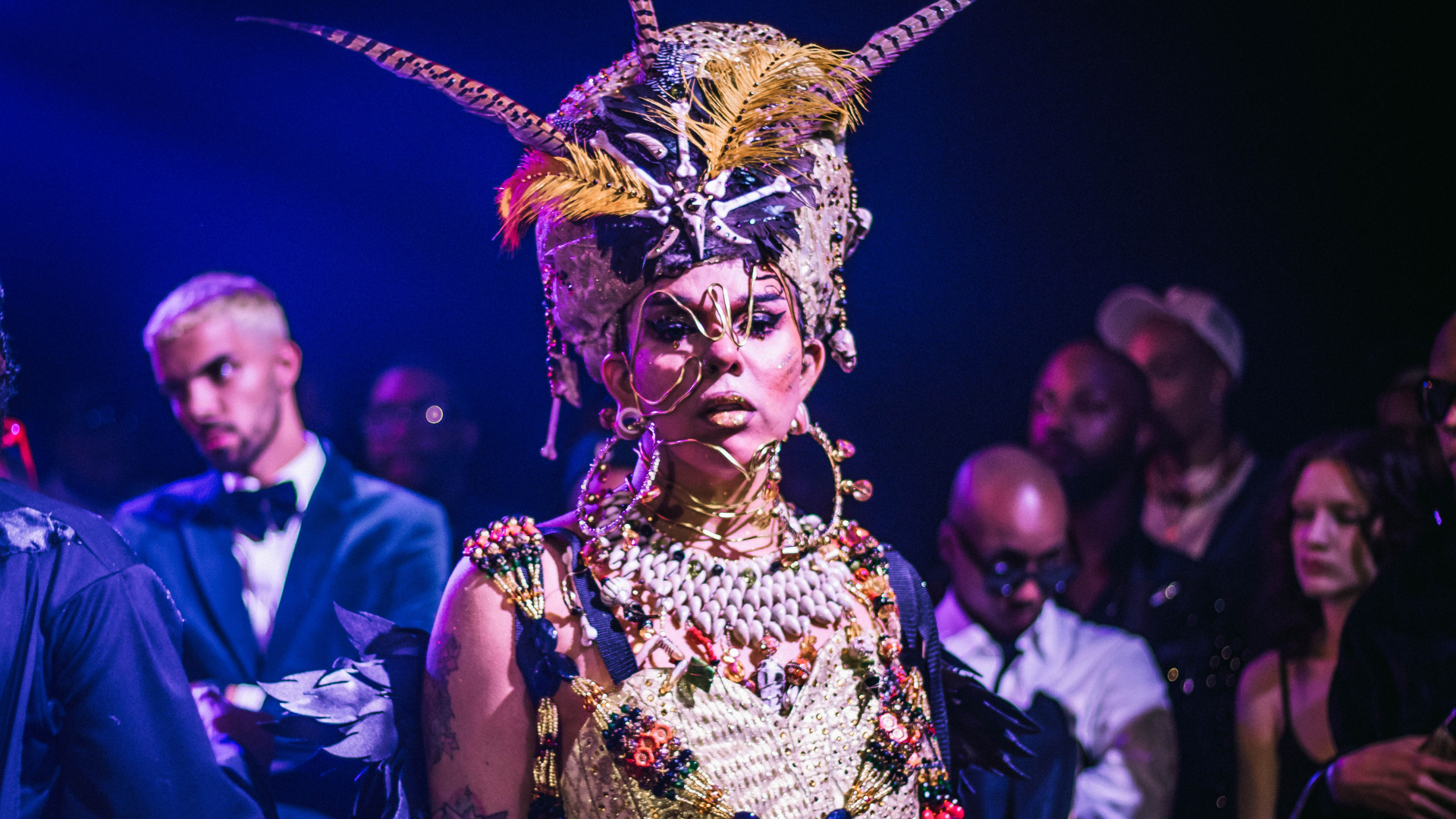
On Saturday, competitors from across the U.S. turned up in Washington D.C. for the “Black Is…” ball put on by ballroom’s House of Comme Des Garcons. EchoStage, the cavernous two-story venue, was packed with attendees decked out in their finest as the organizers asked for looks that nodded to an “Afro-centric Met Gala.” The main attraction: the historic grand prize category of runway for $11,111.11. So the girls and their walks were out—Gillette Oricci with fluid, regal, almost ethereal gait; Lolita Miyake Mugler’s assertive, body-shaking and sometimes aggressive stomp; and Jonovia Lanvin’s sensuous, sinister, yet defiantly confident stalk down the catwalk. The crowd that hooped, slammed their hands on the stage, and yelled in approval while judges who didn’t see it for a certain walker—we meant “the girls” in the most inclusive sense — stopped the procession dead in its tracks with a “chop.”
“It’s one of those fundamental categories in ballroom at large,” Jonovia Lanvin, who has been walking runway for at least 13 years tells ESSENCE.com. She often thinks of herself as a “huntress” on the floor. “No matter what category you walk, you always know a little bit of runway. In a way, you get a little bit of everything from the scene in this one category.”
Ballroom was partially built on runway. The initial balls, held in places like the Hamilton Lodge in Harlem in the late 1800s, featured prizes for those who would parade through the crowd with the best dress or best hair. In the early 1970s when it became the house-ballroom scene known for Black and brown queer and trans communities who organize themselves into “houses,” some of the first categories included those with a “model’s effect.” And before long, members of this community were influencing those on the actual high fashion runway: the likes of Willi Ninja, Benny Ninja, and more have led runway classes for major names in fashion including Naomi Campbell and Christy Turlington, giving them pointers on their walks — Benny notably was on America’s Next Top Model for six years, helping teach models to pose.

“I had to really get out there and make it known,” ballroom icon and Hall of Fame member Baby Garcon says having walked her first ball in 1996. “I’m a cisgender woman and I’m a heterosexual woman but I can still hang with the big boys. I can still give it to you.” Baby made a name for herself in ballroom starting to walk runway in her early twenties after being signed to Wilhelmina at the age of 16. On Saturday, she sat on the panel judging the contestants. But she learned very quickly in her early days that what fashion wanted and what ballroom wanted in a walk were two separate things.
“I remember Bernie Ebony telling me ‘You are not walking if your hips aren’t burning. If your thighs aren’t hurting, you’re not doing it right,’” she says. “If my ponytail wasn’t swinging back and forth, I wasn’t pumping.” And that’s what the category is about—it’s not walking, the girls are pumping.
Every aspect of the Garcon ball was about Blackness. According to the icon and international mother of ballroom’s House of Garcon, Twiggy Garcon, the inspiration came in part from Beyonce’s “Black Is King” music video. Each category was themed for Black culture and the African diaspora. For runway, this meant contestants had to create looks that were inspired by various archetypes found on the continent: the Mali Warrior, the Congolese Shaman, the Nigerian Orisha, and the Egyptian Netjer.
“It’s one of the most creative categories in ballroom and people are able to articulate their artistic expression in such dramatic and memorable ways,” Twiggy says. “The category is runway so the walk does take precedence but the effect is also important. It’s really about the perfect alchemy of both.”

And the effects were impressive: a number of competitors appeared with wings and one interpretation of Netjer saw a walker transformed into a self-lit cobra. Jonovia Lanvin appeared as an all-black manifestation of Bastet with a horn to blow and dripping in Alexis Bittar jewelry. With commentators on the mic keeping the energy high while the crowd screamed house chants, the moment was electric. Of course, it was for good reason: while this wasn’t the first time big money was being given out for runway as this year alone has boasted prizes for $5,000, $7,000, and $10,000, this night was a chance at history.
“This was a Met Gala experience,” Jonovia says. “It was Jonovia as the goddess Bastet coming to the Met Gala.” And while most of the antics many have come to expect from the category — stunts and tricks like smoke and sparklers as well as shady moves like blocking competitors with props or spraying silly string — were largely absent, the competition was still hot. The recently-crowned, North Carolina-based legend Zimmy West took home the grand prize of more than $11,000 with a walk that was unaffected, confident, playful, and that possessed a grace that is not common while threading one’s feet together in a grapevine maneuver or executing quick half turns, swiveling at the hips with precision.
“It was breathtaking and refreshing to see someone give thought to the effect and think outside the box,” Baby Garcon says of Zimmy who is one of ballroom’s foremost designers—he created seven looks for others that night. Zimmy was still working up to 30 minutes before he had to hit the back of the runway, attending to clients. But when he did hit the back in a hand-stoned bodysuit printed with a custom print he designed and $1,500 worth of colored feathers he knew that win, lose, or draw he was going to make a moment to remember. The energy level of the crowd seemed to swell as he made his first trip down the runway, swinging a staff. When he finally made it to the judging panel, they held their scores high yelling “yess!”

“It wasn’t about winning anymore, it was about leaving a never-ending impression,” Zimmy shares. “I was confident and I knew that if I didn’t win I was going to be in the last stretch.” That confidence was clear: in one battle, he came down the runway and walked around a competitor who was executing a slow spin. Zimmy wagged a finger, head held high, his walk as self-assured as possible. The message was clear: I don’t have to do too much. This walk is enough. “Everybody doesn’t have that, that grace,” Baby says.
It’s a gift that Zimmy discovered within ballroom after walking his first ball in 2012 while in college. It was a space that, like for many Black and brown queer and trans people, felt both affirming and explorative, allowing him to find parts of himself he didn’t previously have access to along the way. A community that’s affirmed him for his skills and talents that now, with this $11,111.11, will allow him to invest in his dreams as he will reinvest the money back into his design business. True community at work.